Should your indoor bike position be the same as your outdoor riding position?
Are there comfort and performance benefits from tweaking your bike fit when riding on a trainer?
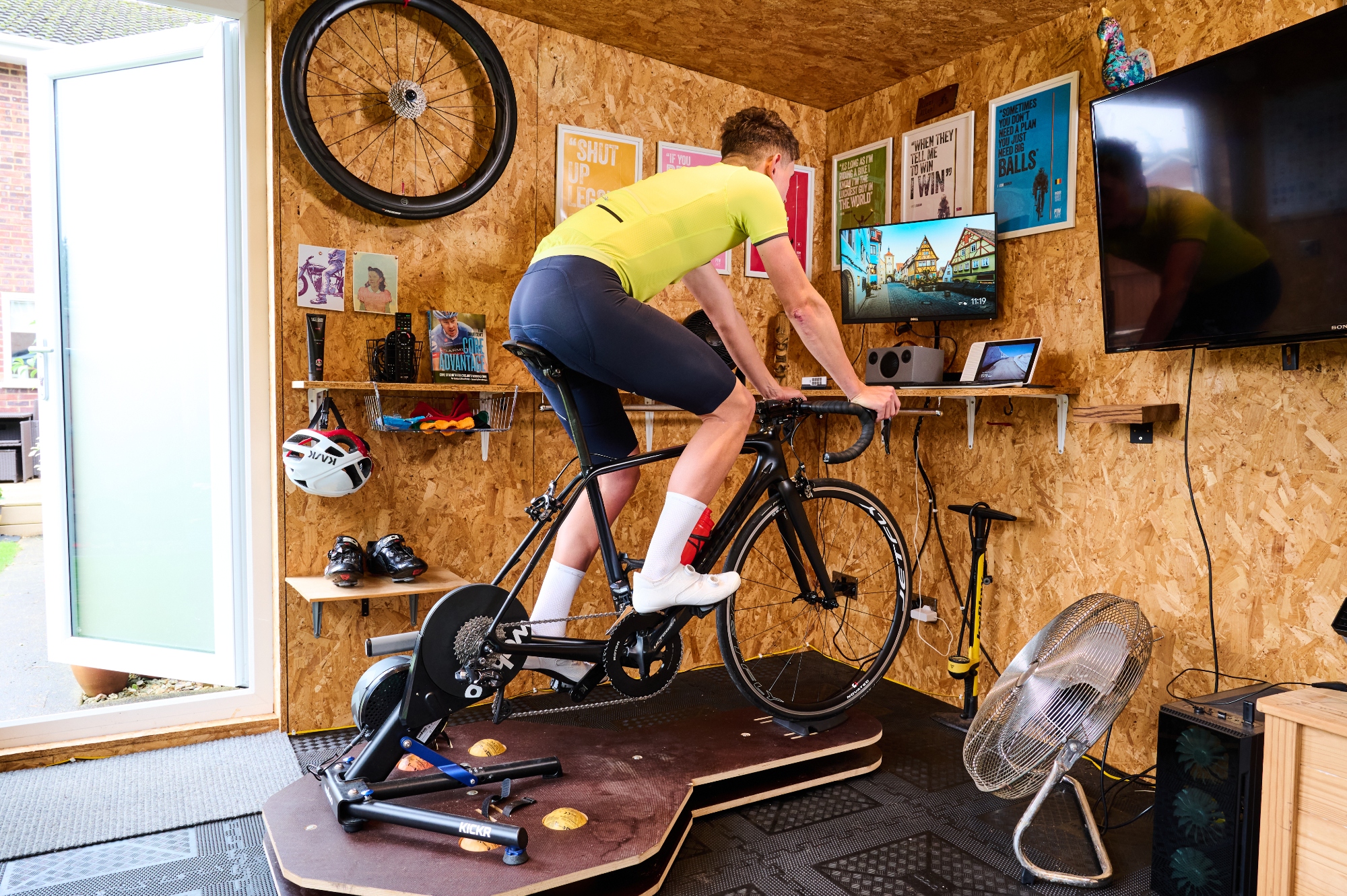
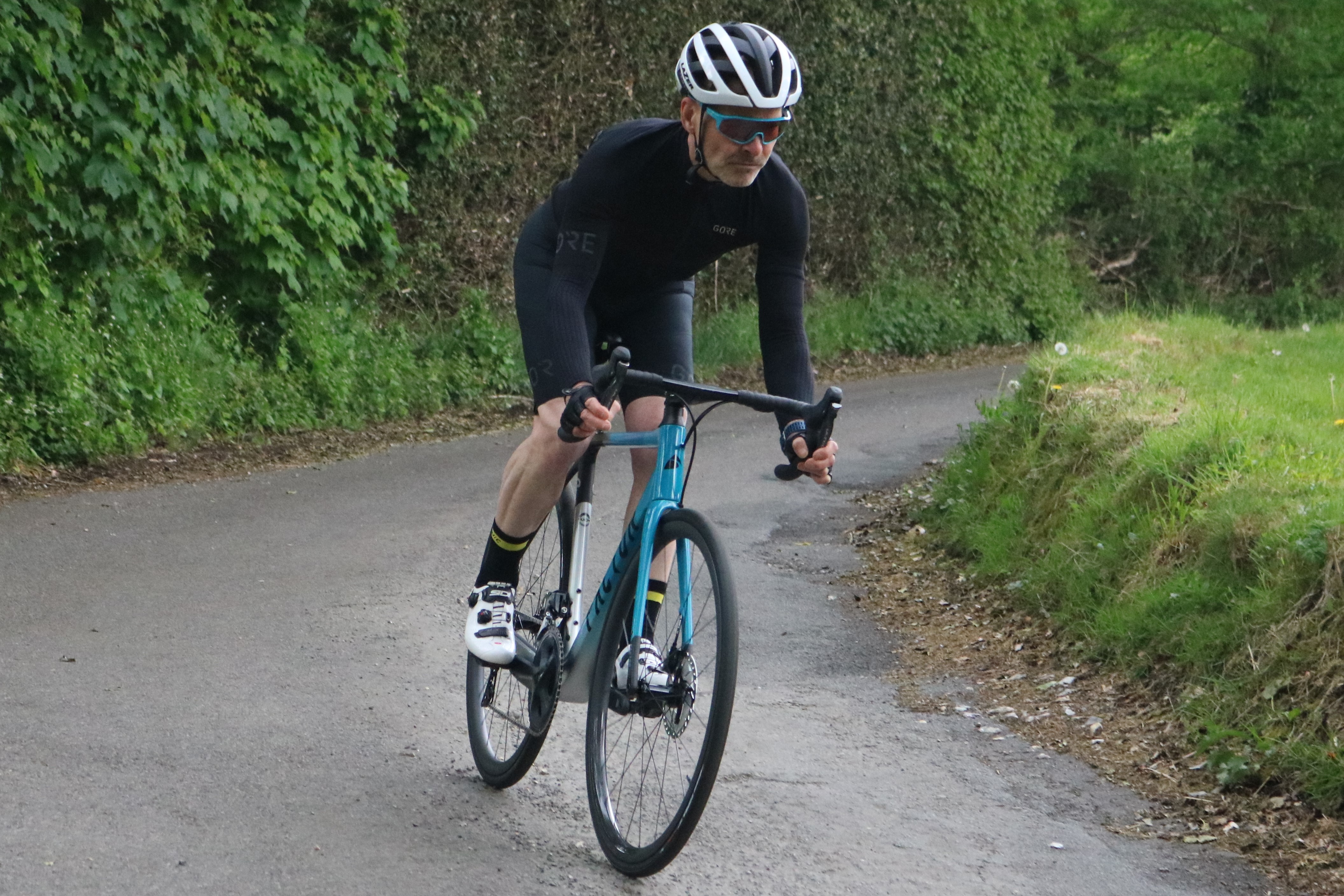
Riding indoors can be a great way to keep your fitness in dreary weather. It’s also a good option for structured workouts, as it’s much easier to concentrate on maintaining power and cadence numbers without having to worry about other road users or finding a flat piece of road.
But many riders find indoor riding uncomfortable and limit their time on the turbo. Others suffer on, aiming to achieve the fitness gains that indoor riding can offer or simply because they’re hooked on the experience of Zwift, MyWhoosh or their other preferred indoor cycling app.
We asked two bike fitters if there’s benefit in changing your ride position for turbo sessions, if you’re finding it uncomfortable, and got two very different answers, although both agreed that there are changes you can make which will help alleviate problems.
If you’re using your outdoor bike on a trainer and you’re happy with how it’s set up for outdoor riding, unless you’re only riding it indoors, you’re probably not going to want to play with your set-up.
So a premise here is that you’ve got an alternative, an N+1 bike or an indoor bike, that you use for indoor riding, giving you the flexibility to change things.
Make changes to your set-up for comfort and performance indoors
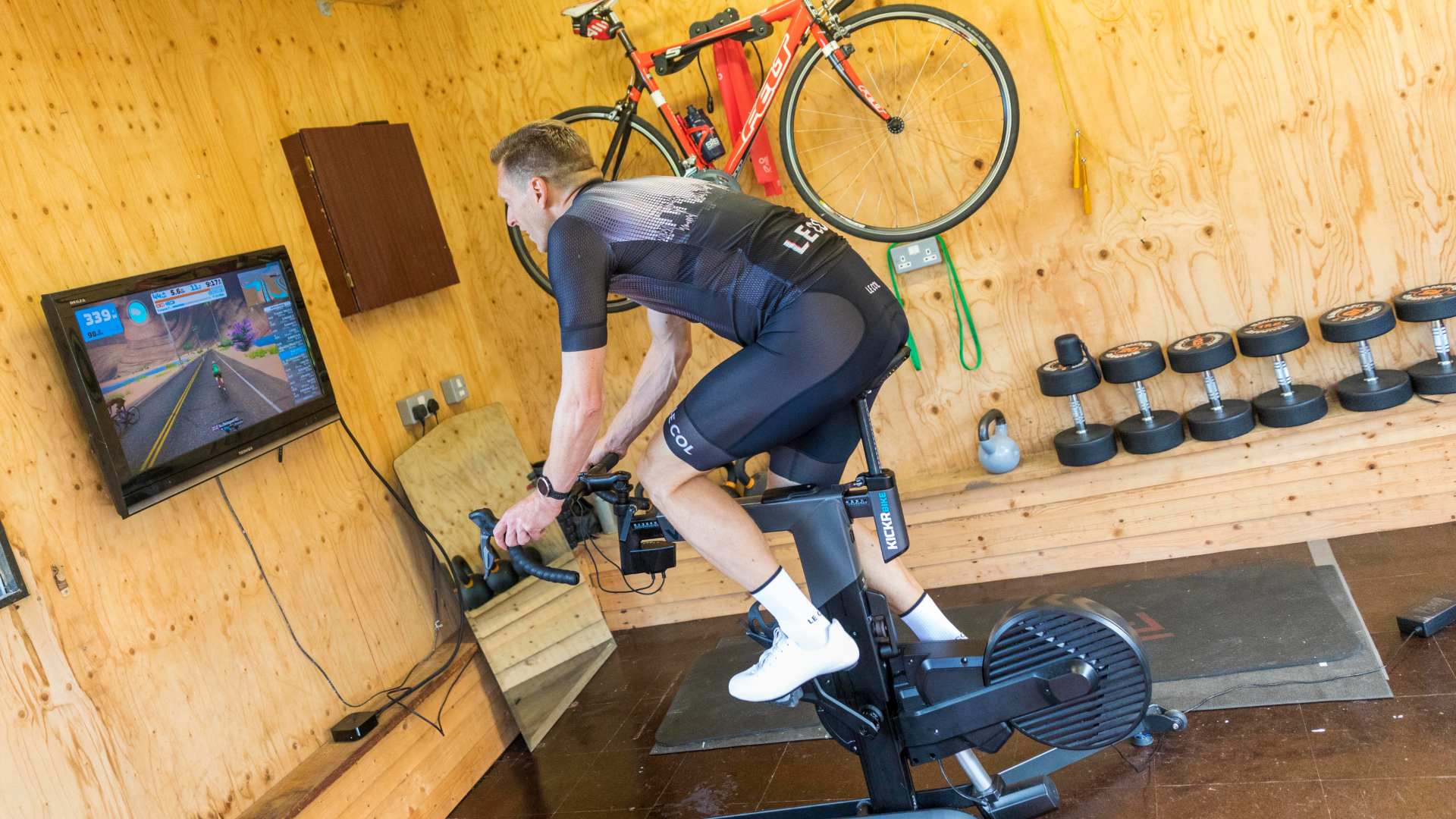
Nas Karimi, head of bike fitting at Pearson Cycles in Sheen, South London advocates adopting a specific ‘indoor set up’.
“If you’re only riding for around an hour a week, you’re probably okay; it’s when it gets to six hours or so per week that problems occur,” he says. “Indoor training is a very different experience to riding outdoors and bike fits aren’t tailored to indoor riding, even if they take place on a stationary bike. The main issues are that you’re not altering your position and the bike isn’t moving laterally.”
Get The Leadout Newsletter
The latest race content, interviews, features, reviews and expert buying guides, direct to your inbox!
Karimi points out that, with your ride position not changing significantly during a turbo session, you’re putting a lot of strain on your back and upper body. You don’t freewheel and, with no momentum indoors, seated to standing transitions have a different effect too.
Along with poor fit, such as having cranks that are too long, longer indoor sessions can lead to hip and knee pain.
“There’s little activation in the glutes, as you’re in general sitting up when on the turbo,” he says.
Some of Karimi’s clients are doing 100-mile Zwift rides indoors, while he has one who has been training for the Race Across America 90 percent indoors and found that it didn’t actually improve his readiness for the event.
So for longer turbo sessions, Karimi advocates experimenting with some significant changes to your position to increase comfort and ensure that you’re getting maximal gains from your workouts. He also advocates pre- and post-ride stretches, warming up properly, taking breaks and making a conscious effort to change your posture, stretch, twist and stand while riding.
Moving the bars closer, changing their angle and raising them can help alleviate problems, he says. Experimenting with slightly moving your saddle for/aft or altering the angle can also help reduce saddle discomfort and allow you to shift your weight more as you train.
“If you have a dedicated indoor bike, you should consider fitting a softer saddle, as there’s more consistent pressure on your saddle when riding indoors,” Karimi says.
As an example, he points to the Selle Italia SLR Boost Endurance Superflow, which is the same shape as the rest of the SLR Boost Superflow range, just with more padding.
If you have the luxury of owning an indoor bike, Karimi points out that there’s huge scope to fine-tune your configuration and see what works. Not only can you adjust the saddle and bar position, but in most cases you can alter the crank length, although Zwift Ride only provides 170mm crank length. He suggests reducing your crank length by a notch may lead to smoother pedalling.
The exception to his advice is time trial bikes, where Karimi says that training your body to hold your position in the aerobars is important.
Maximise outdoor gains with a mirrored set-up
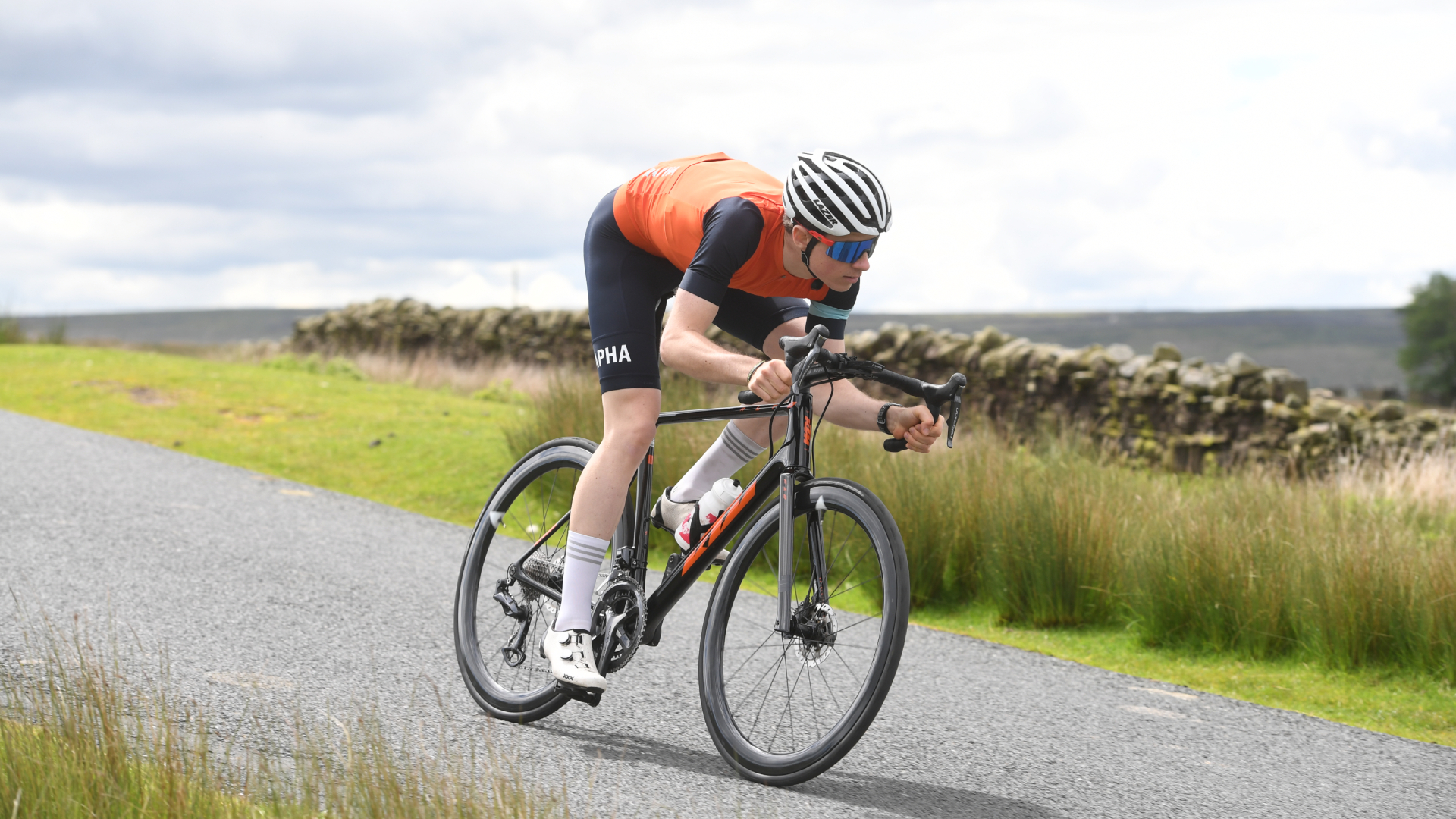
Simon Steeles, a bike fitter and Level 3 coach at Crank Cycle Coaching based in Worthing, Sussex, approaches the question from a slightly different angle, arguing that your indoor set-up should directly mirror your outdoor co-ordinates.
“Your set-up should be close to your road bike, even down to the same saddle,” he says. “You need to train your position and learn how to hold it. If you change your position indoors, you will change the load on your muscle groups.”
Steeles suggests that if you are uncomfortable indoors, a bike fit may help to address problems. He’s found that for his clients saddle pressure mapping and choosing an appropriate saddle can help to address saddle discomfort both indoors and outdoors.
In particular, he counsels against altering your saddle height between indoor and outdoor riding.
Whilst the two approaches appear to conflict, the decision for the reader will be based upon their goals: if you’re riding indoors with a goal of performance outdoors, identical set-ups will ensure you’re training in the position that you intend to adopt. If, however, indoor challenges and racing beckon, you may wish to make tweaks.
Are wobble boards or rocker plates a good investment?
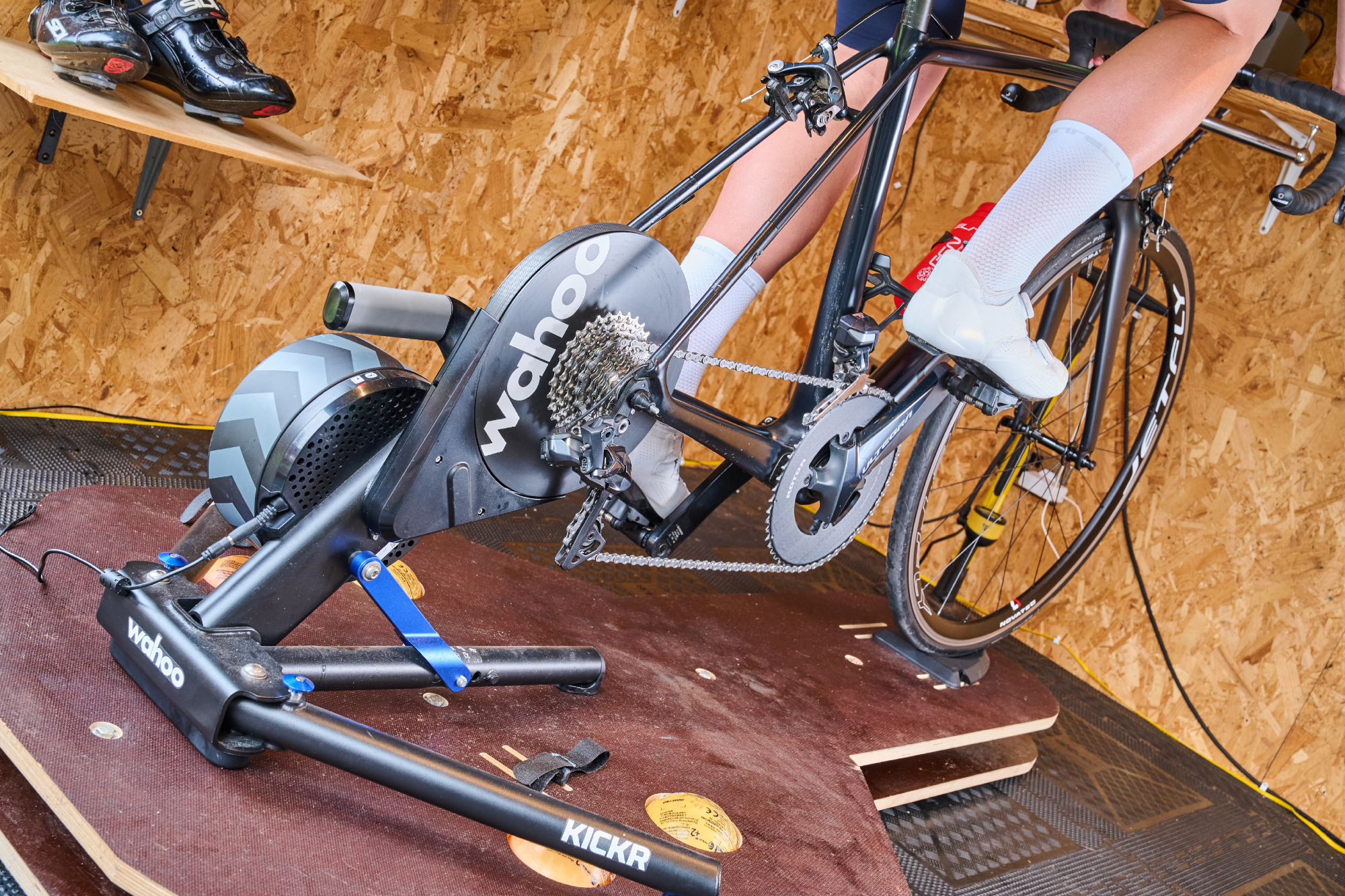
Steeles and Karimi both suggest that there are advantages in having some movement in the system, rather than a totally static set-up.
A wobble board (a.k.a. a rocker plate) will help to alleviate saddle pressure under effort. Steeles has recently started to use one and says that it’s allowed him to increase his session times significantly from his previous sub-one hour turbo rides.
High-end trainers from Wahoo, Tacx and Kinetic allow some side-to-side motion as you ride, putting less stress both on your bike and your body. Both the Wahoo Kickr Move and the Tacx Neo 3M also allow forward and aft movement, which may help to reduce pressure on the body during rapid accelerations when doing intervals.
Both bike fitters point out that a variable riser such as the Wahoo Kickr Climb and Elite Rizer can allow you to recruit different muscle groups on simulated climbs. It will also change the pressure distribution on the saddle, as measured with a pressure pad, Steeles says, which may improve saddle comfort during sessions.
If your turbo budget won’t stretch to a riser, they both suggest placing an old book or two under the front wheel stand, to raise your wheel slightly and achieve similar benefits. Make sure at least that your bike is level and the front is not lower than the rear.
Experiment if you need to
As is often the case, there are strong arguments for and against adopting a specific indoor bike fit. The ideal approach for you will come down to your personal goals. If your summer calendar is filled with road races, where you aim to breakaway and hold an aero position for hours, you’re best off training in that set-up. However, if you’ll be targeting an indoor race, or just want to get fit in as much comfort as possible, then tweak away.

Thank you for reading 20 articles this month* Join now for unlimited access
Enjoy your first month for just £1 / $1 / €1
*Read 5 free articles per month without a subscription

Join now for unlimited access
Try first month for just £1 / $1 / €1
Paul started writing for Cycling Weekly in 2015, covering cycling tech, new bikes and product testing. Since then, he’s reviewed hundreds of bikes and thousands of other pieces of cycling equipment for the magazine and the Cycling Weekly website.
He’s been cycling for a lot longer than that though and his travels by bike have taken him all around Europe and to California. He’s been riding gravel since before gravel bikes existed too, riding a cyclocross bike through the Chilterns and along the South Downs.
You must confirm your public display name before commenting
Please logout and then login again, you will then be prompted to enter your display name.